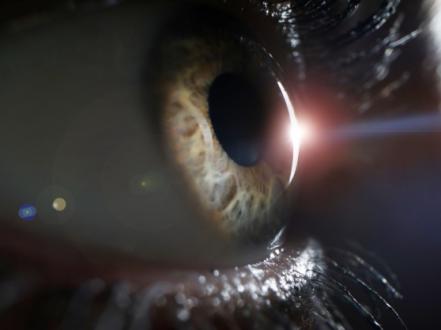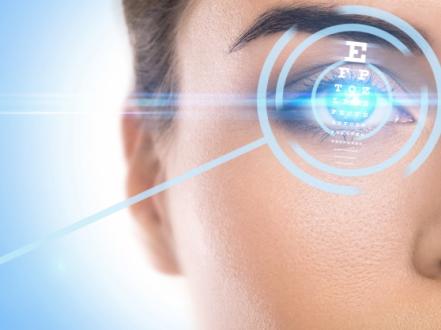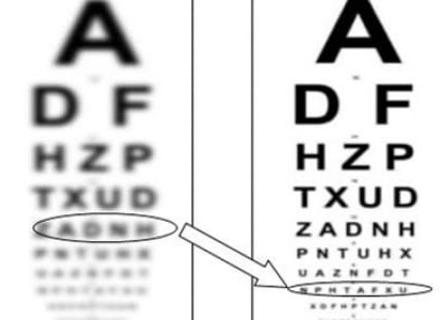Have you ever gone into a dark room or stepped out at night only to have your eyes take time to adjust? For the majority, it's a mere annoyance. But for others, it's a recurring issue that affects their safety and daily living. What is night blindness? It's not merely difficulty seeing in the dark—it's a condition of the eyes that can greatly impair a person's ability to navigate their environment when light is scarce.
Eye and vision health play a tremendous role in the way we adapt to changing light conditions. From driving at night to walking into a theater, we are relying on our eyes to adapt in a split second. But for those who suffer from night blindness, or nyctalopia, this is not a seamless transition. Of all the severe conditions, night blindness driving ranks high on the list, with reaction time, reading road signs, and discerning pedestrians or obstructions each potentially being hindered. Being aware of causes and solutions for this condition is essential—not only for individuals afflicted but for educational purposes as well, to alert others to its risk.
Understanding Nyctalopia: Defining Night Blindness
So, what is night blindness? Night blindness, also known medically as nyctalopia, is a disorder where the eyes cannot adapt well to dark or dim light. Night blindness is not an illness in itself but only a symptom of an issue with the eye's vision at night.
The victims refer to it as being "blind" at night or going into poorly lit places. Imagine driving, reading the menu of a meal eaten at a restaurant lit with candles, or driving in the parking lot around dusk, and not being able to see what is ahead. These real-world limitations are more than a matter of inconvenience—they impact independence and can lead to dangerous situations.
Identifying “what is night blindness” at this deeper level is identifying that it has the potential to seriously limit one's ability to perform everyday activities in safety and with assurance.
Why Does Night Blindness Happen? Identifying Primary Causes
The etiology of night blindness is heterogeneous, but some important factors are usually responsible. Vitamin A deficiency is one important cause that is commonly at fault. It disrupts the formation of rhodopsin, a pigment within the retina that is responsible for light detection. Without sufficient vitamin A, the eyes are deprived of their adaptation capabilities to darkness.
Retinitis pigmentosa is another primary reason, which is a genetic disorder where photoreceptor cells of the retina gradually degenerate. It also begins with night blindness and can later lead to loss of peripheral vision.
Changes in the shape of the cornea are also a cause, especially in diseases like keratoconus, due to thinning and protrusion of the cornea. The uneven surface results in the refraction of light, thereby impairing night vision.
Cataracts, a clouding of the eye's lens, are another culprit. Although there are various cataract types, those that affect the middle of the lens (nuclear cataracts) are most likely to interfere with night vision by scattering light into the eye and creating glare.
Upon asking what vitamin deficiency causes night blindness, the answer is one that is simple: a lack of adequate vitamin A is the most well-documented dietary cause, particularly in parts of the world where malnutrition is common.
Signs for Identification: The Manner Night Blindness Appears
Early detection of night blindness is crucial if it is to be effectively controlled. There are some indicators that will serve at first as subtle but increasingly evident with time or under certain conditions. Most common symptoms are:
- Difficulty viewing objects or individuals in low light or dark environments, including dim rooms or outdoor settings at night.
- Slowing of response to changes in light, for example, going into a dark room from very bright sunlight or entering a tunnel.
- Repetitive bumping into objects or walls when in low-light settings.
- Difficulty viewing faces or objects at night or in shadows.
- Avoidance of nighttime activities, such as driving at night, walking at night, or observing events in low illumination.
- Increased sensitivity to glare from oncoming or offcoming headlights or streetlights.
These symptoms also disrupt normal daily activities and may impact safety, especially in new or poorly lit environments. If you find yourself or someone you know experiencing these symptoms, visiting an eye care professional is a must.
Solutions and Prevention: Treating Night Blindness Effectively
Although some causes of night blindness are not reversible, some are preventable or manageable with the right approach. For example, vitamin A deficiency can be generally addressed by diet or supplements with a doctor's supervision. Foods rich in this vitamin, like carrots, sweet potatoes, and leafy greens, can improve retinal function and the ability to adjust to low light.
For those who have cataracts, surgical removal of the cloudy lens can bring a lot of clarity to day and night situations. Management of conditions such as retinitis pigmentosa will involve low-vision appliances, genetic counseling, and vision rehabilitation programs, but currently, there is no cure.
Wearing anti-reflective glasses, brightening up your home with additional light, and not driving at night when it's not necessary are smart lifestyle changes, too.
Early detection with full eye exams can be a game-changer. Discuss any issues with night vision with an ophthalmologist or optometrist to uncover the potential causes and develop a tailored management plan.
Conclusion
What is night blindness? It's a complex symptom of numerous eye illnesses that interferes with seeing clearly in low light. Whether it's due to nutritional deficiency or genetic disorder, addressing the underlying condition and adapting accordingly can allow one to keep independence and safety. Proactiveness in terms of eye and vision wellness is the secret to successful day and night living.






